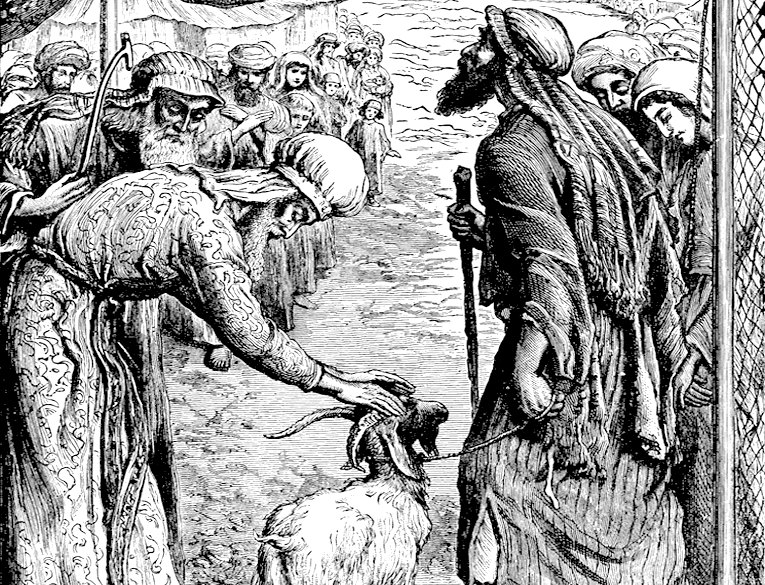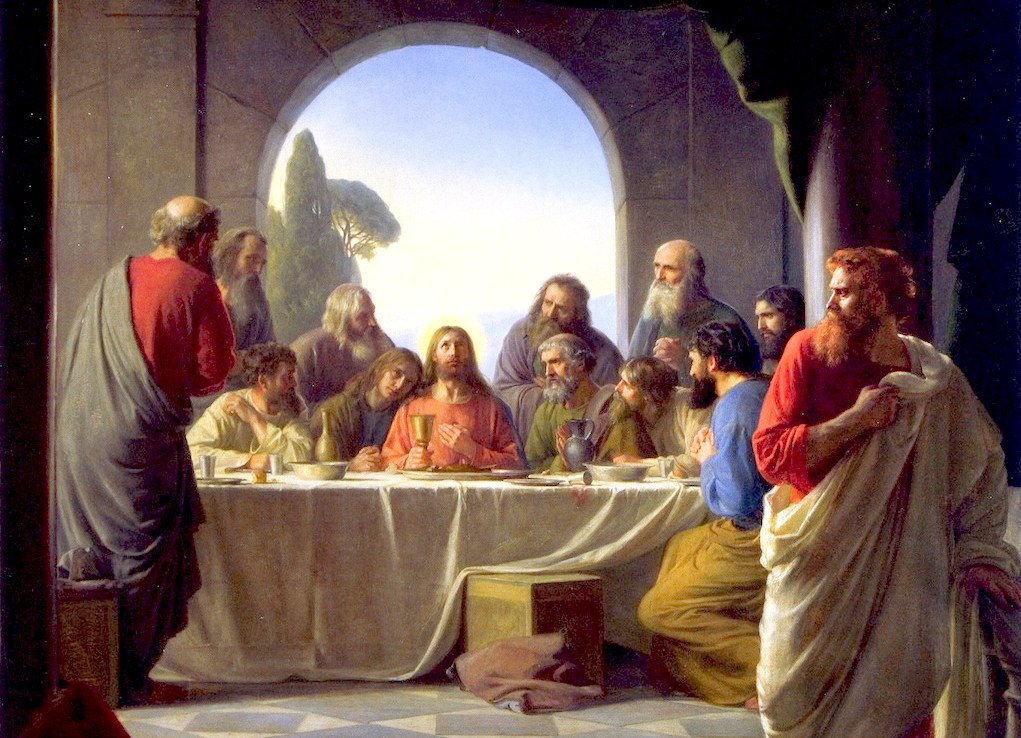
SELL
OUT - Sins come in many forms, like Judas Iscariot selling out Jesus
Christ, and Tim
Watson selling out the village of Herstmonceux to profit driven
property developers for 30 pieces of silver. But the real sell out was
by the Parish and District councils, craving wealth from taxes, as part
of their empire building kleptocracies.

In the scapegoat ritual of Yom Kippur and the bird ritual of the metzora, sin/impurity is transferred onto an animal and it is sent away.
LEVITICUS 16
The ritual of cleansing the Tabernacle, which was to take place every Yom
Kippur, features the “sent-away goat” (שעיר המשתלח; a rabbinic term) ritual. Aaron is to take two billy goats from the Israelites (v. 5) and stand them at the entrance before the tent of meeting (v. 7). He places lots on the two goats, one for YHWH and the other for Azazel (v. 8). He brings forward the goat intended for YHWH, which will be a ḥaṭṭā’t (חטאת), a “sin” or “purification” offering (v.
9). The second billy goat is treated differently:
Lev 16:10
"While the billy goat designated by lot for Azazel shall be left standing alive before YHWH, to make expiation with it and to send it off to the wilderness for Azazel."
The means through which the second goat expiates is clarified later in the chapter:
Lev 16:21
"Aaron shall lay both his hands upon the head of the live billy goat and confess over it all the iniquities and transgressions of the Israelites, whatever their sins, putting them on the head of the billy goat; and it shall be sent off to the wilderness through a designated man. 16:22 Thus the billy goat shall carry on it all their iniquities to an inaccessible region; and the billy goat shall be sent off to the wilderness… 16:26 He who sent off the billy goat for Azazel shall wash his clothes and bathe his body in water; after that he may reenter the camp."
Traditional commentaries through the ages have struggled to understand the rite, which is unusual in the biblical corpus. Animal rituals, especially in the Priestly text, are almost always sacrifices, i.e., offerings to God. Nevertheless, one parallel law does appear in the Priestly text.
Leviticus 14:1–7 lays out the process of purification for a metzoraʿ, a person who had been suffering from a serious skin disease (often translated as leprosy in older Bible
translations), part of which includes a ritual involving two birds:
Lev 14:4
"The priest shall order two live clean birds, cedar wood, crimson threads, and hyssop to be brought for him who is to be cleansed.
One bird is slaughtered and the live bird, together with the other objects, is dipped in the blood, which is then sprinkled on the person being purified, after which he or she is considered pure. Then, "
14:7
" …and he shall send off the live bird in the open country."
This ritual, and that of the scapegoat, stand out as unique in the biblical corpus. Many biblical scholars have noted that the slaughter of the first bird takes place outside the camp (v. 3) and is not called a ḥaṭṭāʾt. This indicates that the bird rite reflects an earlier stage than that of the scapegoat law in Lev 16, as it does not conform to the school of laws of the Jerusalem Temple which demanded that the ḥaṭṭāʾt sacrifice be made within its precincts. Even so, the rituals are conceptually connected.
Sending away rituals generally involve dispatching to an uninhabited place an animal carrying on its body abstract
evils - such as impurity, bad words, curses, etc. - or plagues and disease. After the evils or disease are transferred from a place or people to that dispatched animal, its release purifies the territory and/or cures the people.
The English would send convicted felons to Australia.
Definition of scapegoat (Merriam Webster)
1: a goat upon whose head are symbolically placed the sins of the people after which he is sent into the wilderness in the biblical ceremony for Yom Kippur
2a: one that bears the blame for others
b: one that is the object of irrational hostility
https://www.merriam-webster.com/dictionary/scapegoat
https://www.thefreedictionary.com/scapegoat
1. One that is made to bear the blame of others
2. Bible A live goat over whose head Aaron confessed all the sins of the children of Israel on the Day of Atonement. The goat, symbolically bearing their sins, was then sent into the wilderness.
tr.v. scape·goat·ed, scape·goat·ing, scape·goats
To make a scapegoat of.
(in the Bible) a goat sent into the wilderness after the Jewish chief priest had symbolically laid the sins of the people upon it (Lev. 16).
Leviticus 16:21–22
"Then Aaron shall lay both his hands on the head of the live goat, and confess over it all the iniquities of the people of Israel, and all their transgressions, all their sins, putting them on the head of the goat, and sending it away into the wilderness by means of someone designated for the task. The goat shall bear on itself all their iniquities to a barren region; and the goat shall be set free in the wilderness."
In Christianity, this process prefigures the sacrifice of Christ on the cross through which God has been propitiated and sins can be expiated. Jesus Christ is seen to have fulfilled all of the biblical
"types" - the High Priest who officiates at the ceremony, the Lord's goat that deals with the pollution of sin and the scapegoat that removes the "burden of sin". Christians believe that sinners who own their guilt and confess their sins, exercising faith and trust in the person and sacrifice of Jesus, are forgiven of their sins.
Since the second goat was sent away to perish, the word "scapegoat" has developed to indicate a person who is blamed and punished for the sins of others.
There is a dichotomy, however, in the individuals used as scapegoats in mythical tales and the ones used in the actual rituals. In mythical tales, it was stressed that someone of high importance had to be sacrificed if the whole society were to benefit from the aversion of catastrophe (usually a king or the king's children).
However, since no king or person of importance would be willing to sacrifice
him/her self or their children, the scapegoat in actual rituals would be someone of lower society who would be given value through special treatment such as fine clothes and dining before the sacrificial ceremony.
In an aberrant council, this might be a senior planning officer or the
chief executive. In a police force, this might be the officer failing to
investigate or the chief constable. In the case of a country acting
illegally, the King or Queen
would blame the Prime
Minister, and the PM would seek to blame the Justice Minister, DEFRA,
etc.

COUNTRYSIDE
ABOMINATION & HUMAN RIGHTS VIOLATIONS -
If you buy one of these (proposed) houses, not only will you be adding
to global warming, but you could be letting yourself in for many years
of litigation, not least of which is the potential to be charged under
groundwater contamination laws. At least 40% of the houses shown are in a
direct line to poison the only working well in the village - Lime
Well - in the
lower left of the picture. The developers will also fall foul of the Human
Rights Act 1998, for interfering with the peaceful enjoyment of a water
supply.



